Online Guide to Pasture Biodiversity in the Lower Blackwood
Biodiversity - the root of soil health and resilience
A Pasture Biodiversity project to build soil health and resilience in the Lower Blackwood
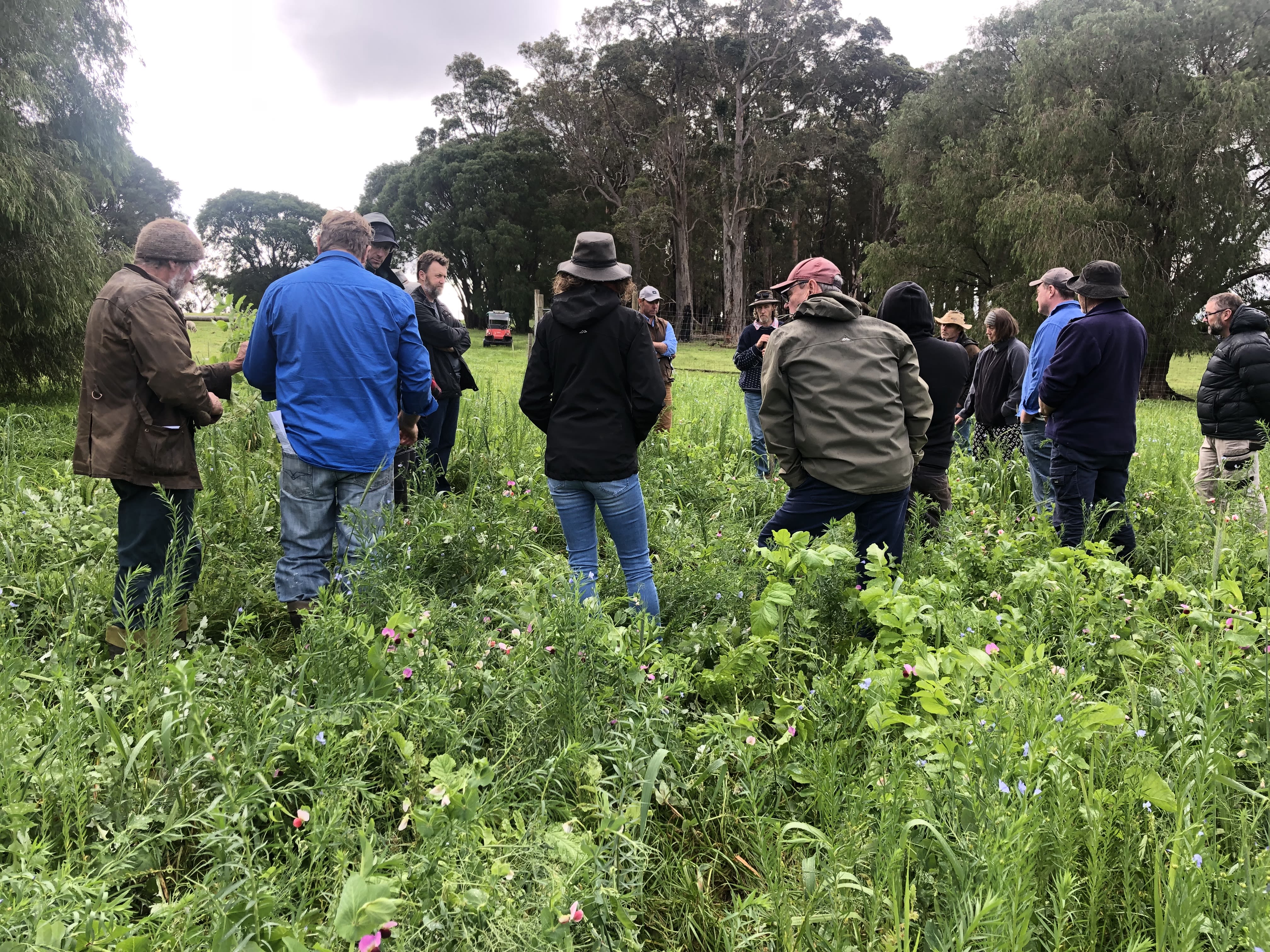
About the Project
Lower Blackwood LCDCs project 'Pasture Biodiversity to Build Soil Health & Resilience in the Lower Blackwood' was designed to demonstrate the efficacy of seeding multi species annual and perennial plants into pastures as a means to improve farm drought resilience in the Lower Blackwood catchment.
Our goal was to investigate the potential for multispecies mixes to be used as a cost-effective measure to:
- improve soil structure & water holding capacity,
- improve soil fertility & carbon levels,
- support biodiversity (above & below ground),
- reduce soil erosion and run off
- meet seasonal forage requirements.
The project included a series of practical how to workshops, supported by on site demonstrations at separate farm locations within the catchment. The demonstrations gave crucial local context, and provided evidence that the information delivered in the workshops is applicable and achievable with the soils and climate of the catchment.
This article outlines species selection, seeding, establishment and ongoing management of diverse pastures and the outcomes in terms of soil and pasture health.
The project received funding from the Australian Government’s Future Drought Fund and was facilitated by LCDC Project Officers and Project Consultant & Agroecologist Mark Tupman (Productive Ecology) with support from Agronomists Anthony Quinlan (Soil Dynamics), & Graham Mussell (Graham Mussell Consulting).
Building soil with living roots
Building soil with living roots
Soil Assessments on the Warner Glen Demonstration Site.
Soil Assessments on the Warner Glen Demonstration Site.
Tailoring Multispecies Mixes
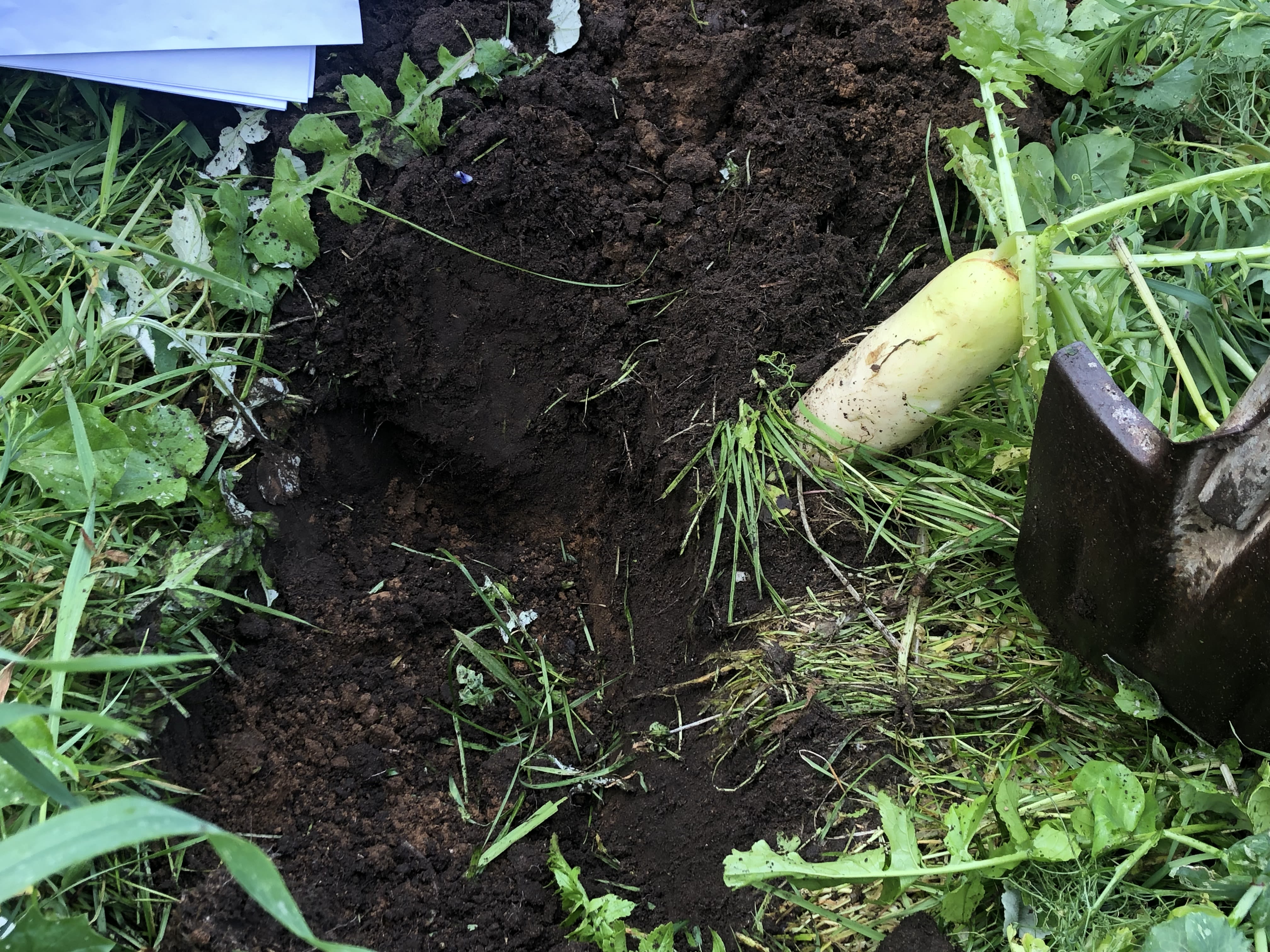
"The types and quantities of species used in a multi species mix matter. The diversity, critical mass and proximity between different types of plants and the microbe communities they support, determine the supply of goods and services shared via the underground network. This makes all the difference to the health, growth and resilience of a mixed cover crop and it’s effectiveness."
Depending on the desired outcomes, it is important to make sure there is reasonable representation from a range of family groups. While there is much variation even within species, it is the traits that define a family that are most significant. A multispecies mix is usually made up of grasses, legumes and other broadleaf forb species
Diversity Diversity Diversity!
This short video is a summary of the Jena Experiment - a long term study of the interactions between plant diversity and ecosystem processes.
In this Lower Blackwood Webinar Australian soils ecologist Dr Christine Jones explains the truly amazing connections between plants, microbes & the soil, & how a positive feedback loop between them all can work to restore our farmland soils.
In this Talkin' After Hours Podcast, Jo & Kate chat to agroecologist David Hardwick from Soil Land Food. The topic for this episode is something of a conundrum for this neck of the woods... that is, how do we go about transitioning from a primarily annual & low diversity pasture system to a multispecies & perennial system in a Mediterranean climate...and why we should consider doing it?
In this Talkin' After Hours Podcast, Jo & Kate chat to agroecologist David Hardwick from Soil Land Food. The topic for this episode is something of a conundrum for this neck of the woods... that is, how do we go about transitioning from a primarily annual & low diversity pasture system to a multispecies & perennial system in a Mediterranean climate...and why we should consider doing it?
Using plant diversity to build dark and well aggregated (crumbly) soil. Image taken at Rosa Glen Demonstration Site.
Using plant diversity to build dark and well aggregated (crumbly) soil. Image taken at Rosa Glen Demonstration Site.
Cover crop of staple cool season species. Image taken at Rosa Glen Demonstration Site.
Cover crop of staple cool season species. Image taken at Rosa Glen Demonstration Site.
Multispecies Seed Mix.
Multispecies Seed Mix.
Early growth warm season pasture mix at the Warner Glen Demonstration Site.
Early growth warm season pasture mix at the Warner Glen Demonstration Site.
Customised Blends
Different multispecies cover crop mixes can be tailored to target desired outcomes. It is important to know beforehand what the reasons are for growing a multispecies cover crop as this dictates the species and rates of each you use in a mix.
Broadly Speaking...
- A base mix of seasonally appropriate annual cereals and legumes and a diversity of other forb species from different families are recommended for quick soil improvement. Perennial species build soil at depth but it takes longer.
- The inclusion of grasses and clovers that can handle grazing is standard for forage situations. Perennial species can offer good extended season forage once established, but are challenging to establish.
- Tall or vigorous annual cereals, legumes and broadleaf forbs can be used to smother seasonal weeds.
- There are numerous seasonal flowering species from a range of forb families such as that you can add to a mix if you want to attract beneficial insects i.e. Brassicaceae, Asteraceae, Lamiaceae, Chenopodiaceae, Boraginaceae
- Many edible species go well and may be included in a multispecies mix. These include Cereals, Sunflowers, Rocket, Coriander, Silverbeet, Asian Greens, Turnips, Radishes, Kale, Lettuce, Pumpkins, Squash, Corn, Black Eyed Beans, Flaxseed, Chicory etc…
- Hybrid mixes are made up of both warm season species and cool season species as both types can often be grown in our Mediterranean autumn and spring. They can have complimentary growth traits and offer different qualities in terms of feed composition at certain times of year.
In this episode, Kate and Jo talk to beef farmer, cropper & seed grower Grant Sims from Down Under Covers. Grant Sims is a sixth-generation farmer running the family farm with his wife Naomi and 4 children in Northcentral Victoria Australia. The farm is 8500 acres of dryland and some irrigation. When Grant took over the farm full time he started looking at ways to improve the life and function of the soil through biology. One of the key tools that Grant has been using to do that is companion and cover cropping, and over time has seen many positive changes in the health or their soils and plants. Grant has generously been sharing his knowledge and experience with farmers on the East Coast, and, although the climate in Northcentral Victoria is a little different to ours in the South west of western Australia, there are many practical lessons that can be learnt from Grant on using multispecies mixes on pasture to improve soil health. Our conversation with Grant delves into the practical nitty gritty of planning, seeding & establishing a multispecies & perennial pasture.
In this episode, Kate and Jo talk to beef farmer, cropper & seed grower Grant Sims from Down Under Covers. Grant Sims is a sixth-generation farmer running the family farm with his wife Naomi and 4 children in Northcentral Victoria Australia. The farm is 8500 acres of dryland and some irrigation. When Grant took over the farm full time he started looking at ways to improve the life and function of the soil through biology. One of the key tools that Grant has been using to do that is companion and cover cropping, and over time has seen many positive changes in the health or their soils and plants. Grant has generously been sharing his knowledge and experience with farmers on the East Coast, and, although the climate in Northcentral Victoria is a little different to ours in the South west of western Australia, there are many practical lessons that can be learnt from Grant on using multispecies mixes on pasture to improve soil health. Our conversation with Grant delves into the practical nitty gritty of planning, seeding & establishing a multispecies & perennial pasture.
Field peas are a reliable legume species to include in cool season multispecies mixes
Field peas are a reliable legume species to include in cool season multispecies mixes
Pasture cuts at the Rosa Glen Demonstration Site to assess yield an feed quality.
Pasture cuts at the Rosa Glen Demonstration Site to assess yield an feed quality.
Assessing quality & yield at the Scott River Demonstration Site.
Assessing quality & yield at the Scott River Demonstration Site.
A multispecies pasture mix of vetch, field peas, oats, flaxseed, tillage radish, ryegrass, clover, chicory and plantain
A multispecies pasture mix of vetch, field peas, oats, flaxseed, tillage radish, ryegrass, clover, chicory and plantain
Soil improvement, rapid generation of biomass and effective weed control are all outcomes that can be achieved with a multispecies cover crop.
Soil improvement, rapid generation of biomass and effective weed control are all outcomes that can be achieved with a multispecies cover crop.
Seeding Rates
Listed in the tables below are appropriate cool and warm season pasture species that can be used in multispecies mixes, and the approximate seeding rates for each species.
When designing a multispecies mix, you decide how many species and what percentage of each you want in the mix. You then work out the quantity of each species to include in the seed mix by multiplying its full seeding rate by its percentage of the mix.
It is best to seed at slightly higher rates when sowing a multispecies mix than you would if sowing a single species. A standard recommendation would be to add an extra 20-30% on top of the usual full seeding rates.
Seeding Rates | Autumn/Winter Species

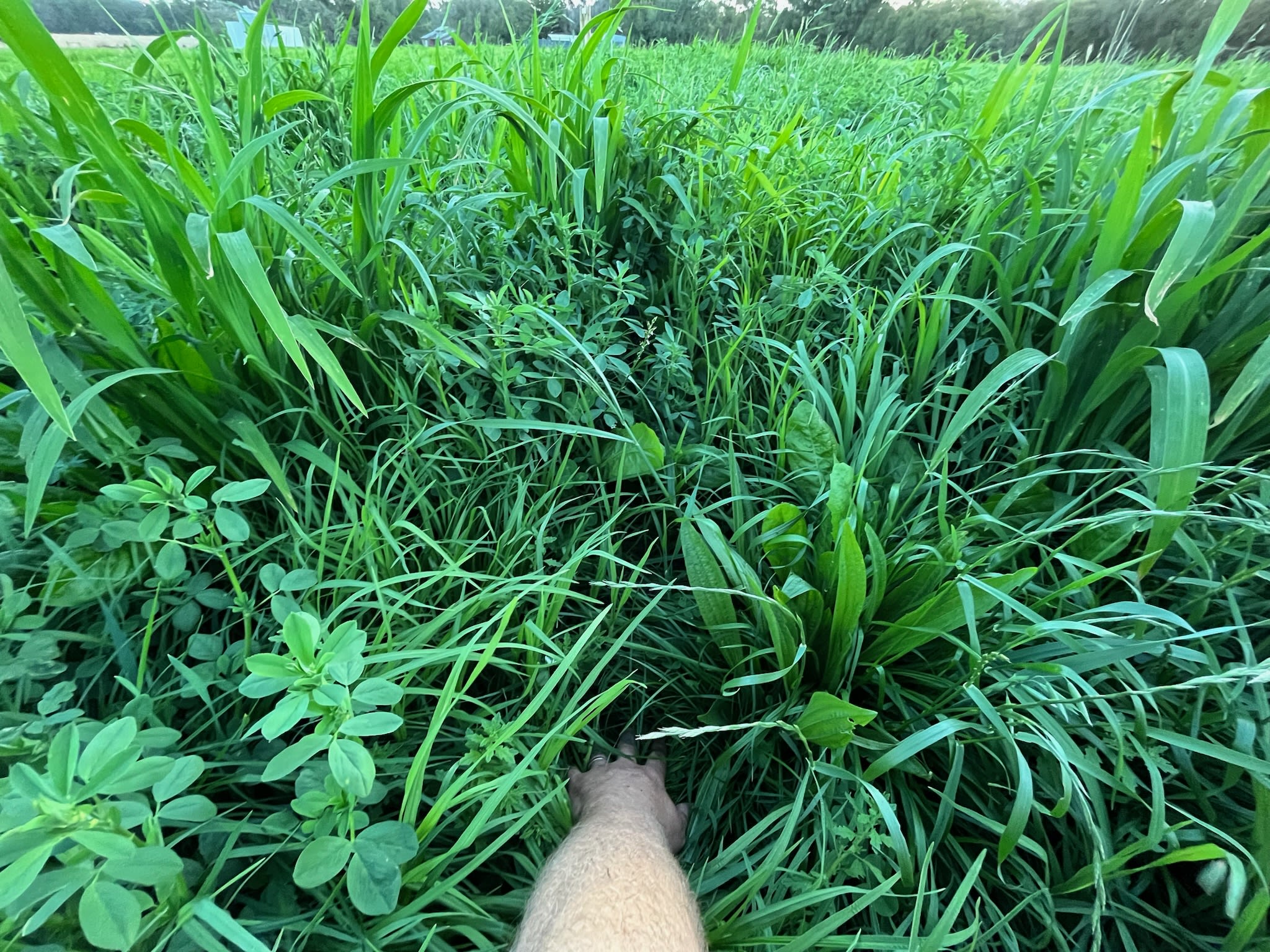
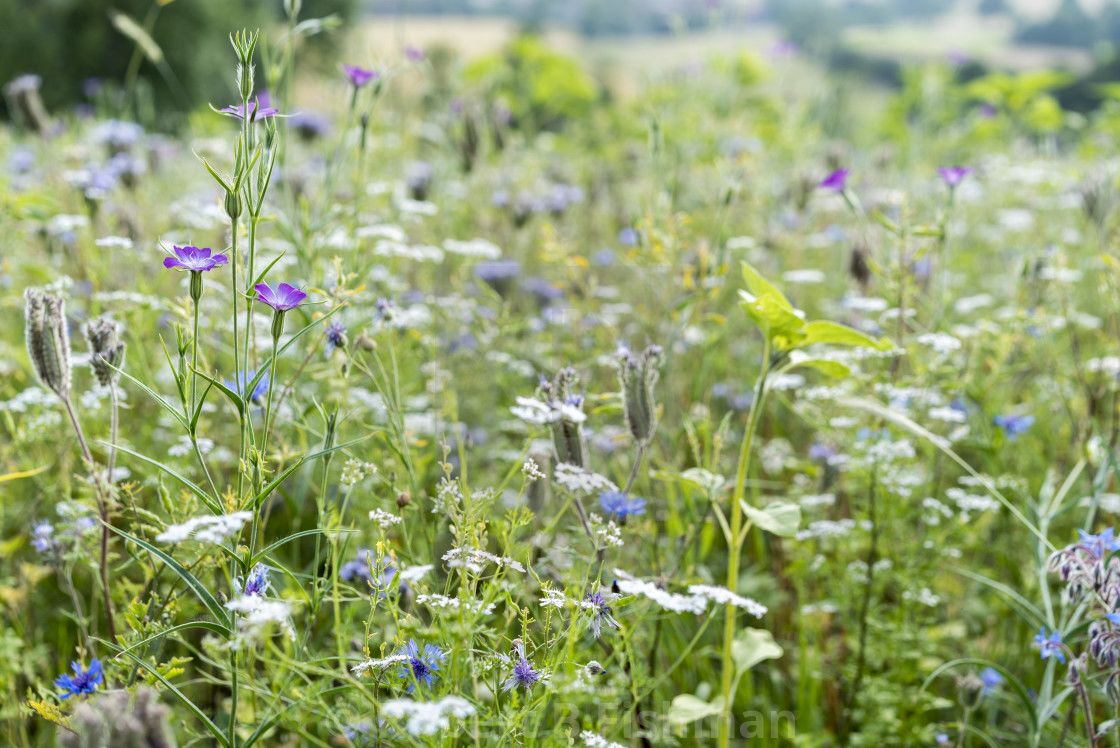
Seeding Rates | Spring/Summer Species
Here are two of examples of tailored mixes - the Green Manure Mix is good to use as a base to start and then add additional species to match your goals and context.
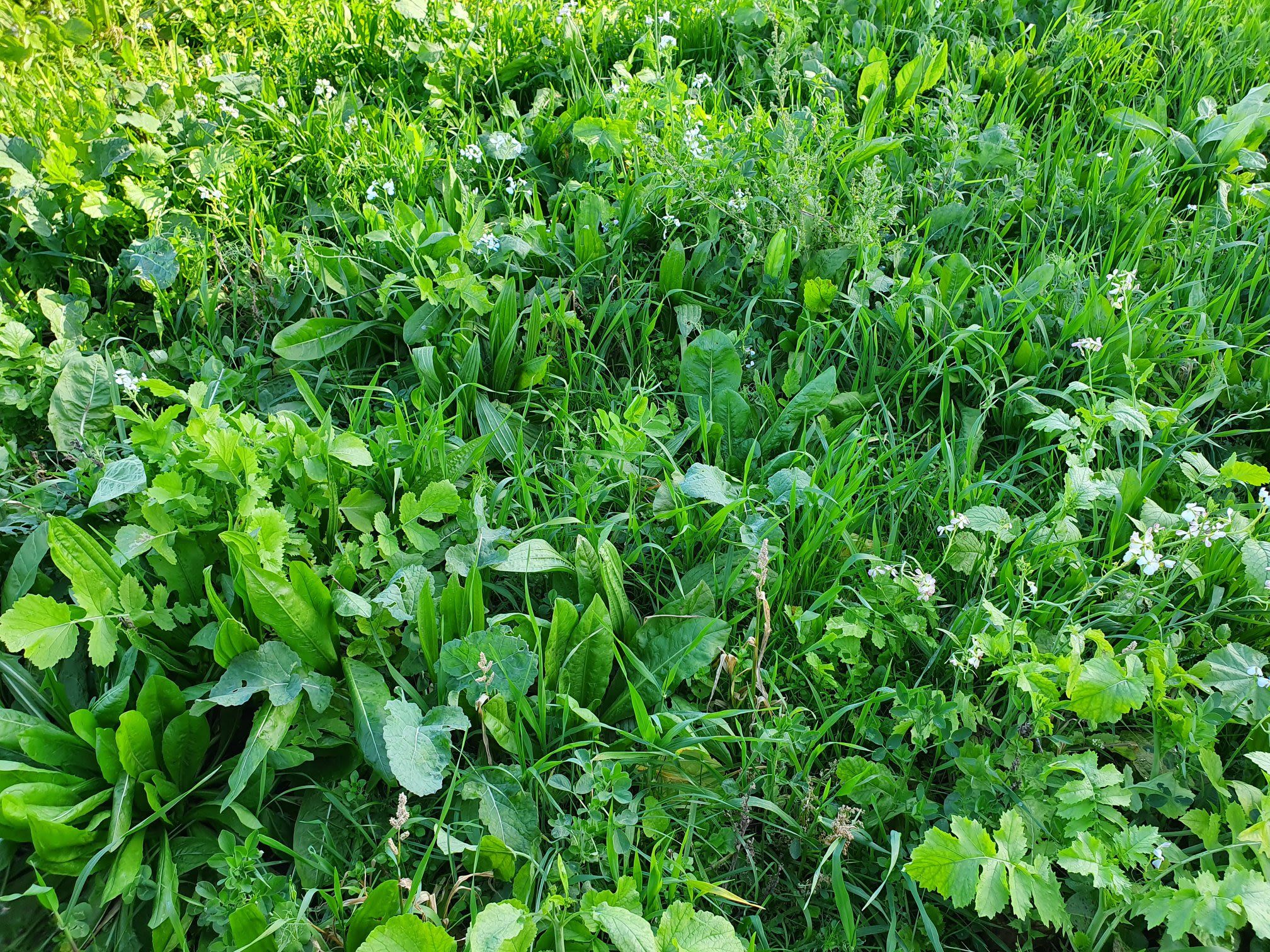




Soil Priming and Early Nutrition

An actively growing, diverse stand of plants, and the microbial community it promotes in the root zone, do wonders for soil structure and fertility.
Conversely, most of the plants we are looking to establish, grow better in well structured, fertile soil. With our long dry summers and old weathered soils, typical paddocks can be found wanting in this department.
The catch 22 is that in order to get a multispecies planting off to a good start so that it can build better soil that grows better plants and so on…, some microbial and nutritional support in the beginning may be warranted.
Dressing seeds is a very cost-effective way to directly apply materials that stimulate germination and/or support the healthy establishment of plants.
Seeds can be inoculated with strains of bacteria or mycorrhizal fungi to ensure successful colonisation with microbial associates.
They could also be lightly coated with extracts of well matured compost or vermicastings. Compost/vermicast extracts contain microbes, bio-timulants, bio-chemicals, enzymes, organic acids, nutrition etc, similar to what a germinating seed would naturally come in contact with, and benefit from, in a healthy topsoil. These extracts are often applied along with other bio-stimulants such as seaweed, milk, molasses etc. when coating seeds.
Trace elements that are needed in minute amounts can also be used in seed dressings.
Through the early stages of growth, following germination, plants are still small so there is less leaf surface area. As such photosynthetic capacity, root spread and root exudation are not yet sufficient to drive strong biological activity in the soil.
Well known biological primers such as fish hydrolysate, seaweed, humates, molasses etc somewhat emulate the carbohydrates, humic substances, amino acids and bio-stimulants that would be available to soil biology in a healthy ecosystem.
These can be applied in a soil drench prior to, at and post planting to kickstart the soil microbiome that fosters favourable soil conditions and healthy plant growth.
Poor soils are lacking in plant available nutrients and young plants benefit immensely from good early nutrition. Small applications of nutrients, that are known to be deficient, prior to and/or post germination, can go a long way towards the establishment of a robust plant community.
Nutrients can be spread in mineral or granular form, dissolved in water and sprayed out over fields, or applied in furrow at planting. Generally speaking, nutrients that are needed in greater quantities are spread/broadcast. Soluble fertilisers and trace minerals that are only needed in small amounts can be sprayed out in a soil drench for better distribution or applied to plant foliage for efficient uptake. Nutrients and bio-stimulants/foods in granular, powder and liquid forms can be used in furrow at planting.
For more on priming seeds:
In this Talkin’ After Hours Podcast Jo and Kate talk to Mark Tupman from Productive Ecology. For over two decades Mark has been active in the fields of organic/biodynamic production, permaculture, sustainability, agro-ecology and holistic management and in between times managed an orchard, animals and food gardens on his own property. Recently Mark has been working with the LCDC as a project consultant on a couple of Lower Blackwood projects - Regenerative Agriculture in Practice & Pasture Biodiversity to Build Soil Health & ResilienceT. oday's conversation is going to zero in on what some say is possibly the single most important thing you can do to set seeds up for germination and early growth success – that is coating seeds with biostimulants prior to seeding them in the paddock. With a lot of farmers now planning their autumn seeding it’s a pretty timely topic!
In this Talkin’ After Hours Podcast Jo and Kate talk to Mark Tupman from Productive Ecology. For over two decades Mark has been active in the fields of organic/biodynamic production, permaculture, sustainability, agro-ecology and holistic management and in between times managed an orchard, animals and food gardens on his own property. Recently Mark has been working with the LCDC as a project consultant on a couple of Lower Blackwood projects - Regenerative Agriculture in Practice & Pasture Biodiversity to Build Soil Health & ResilienceT. oday's conversation is going to zero in on what some say is possibly the single most important thing you can do to set seeds up for germination and early growth success – that is coating seeds with biostimulants prior to seeding them in the paddock. With a lot of farmers now planning their autumn seeding it’s a pretty timely topic!
Mixing seed ready for coating.
Mixing seed ready for coating.
Making a compost slurry
Making a compost slurry
Coating the seed with biologicals.
Coating the seed with biologicals.
Roots from seed coated with compost extract
Roots from seed coated with compost extract
Young roots showing good microbial colonisation
Young roots showing good microbial colonisation
Sowing a Cover Crop

Sowing a cover crop
The right temperature range, adequate moisture and minimal competition from weeds in the early stages of growth are important for the successful establishment of multispecies cover crops.
So too, is seed to soil contact and protection. In most cases, drilling the seeds into the soil at the right depth and rolling as opposed to broadcasting them on the surface is much more successful. Exposed seeds may struggle to get roots into the soil, are prone to drying out and exposed to wildlife.
The establishment of a diverse multispecies pasture is usually achieved over a number of seasons. Starting off with reliable, affordable cool season species, seeded in early autumn is a good strategy to improve soil conditions and reduce weed pressure. Reasonable soil hydration and moisture retention are necessary to support a reasonable stand of warm season species into the dry part of the year.
This is very much dependent on the ability of soil to retain water, and thorough control of established cool season weeds that strongly compete for moisture and nutrients as they go to seed.
The establishment of expensive perennial species is best attempted last in the sequence for a number of reasons. Unless the soil can hold enough moisture, perennials won’t make it through the dry season. There must also be a comprehensive pre-planting weed management plan in place as they are slow to establish and don’t fare well with competition. From the time they have been seeded, the options to use herbicides and/or cultivate are limited.
"If the soil is poor, it’s wise to avoid trying to grow cover crops over the warm dry season and instead focus on growing cool season species to prime the soil."
Autumn seeding at the Warner Glen Demonstration Site
Autumn seeding at the Warner Glen Demonstration Site
Warm season: Phaecelia
Warm season: Phaecelia
Emerging Warm Season Cover Crop at the Scott River Demonstration Site
Emerging Warm Season Cover Crop at the Scott River Demonstration Site
Cool Season
One benefit of sowing cool season species at the break of season is that winter weeds haven't germinated yet. As dry seeding is carried out early in the season, the cover crop species make good growth before conditions get too cold and wet. There are also a number of warm season species such as sunflowers and buckwheat that can be included in the seed mix if you sow early as they may grow well in the mild autumn conditions.
However, if you sow too early, seed that germinates in an isolated rain event can die with lack of follow up rain. It's best to look out for a good cool season type of front and not be tempted to sow with an early front that comes from something like cyclone activity further North.
As a general rule of thumb it’s probably best not to sow before April.
If you miss the break some sort of weed control such as surface cultivation or spraying must be carried out pre sowing to ensure a good take. It may be possible to deal with very early germination using livestock to mob graze hard. Obviously the later you sow, the more established the weeds, making termination harder and the shorter and cooler the growing season will be.
Loading seed for autumn seeding at the Rosa Glen Demonstration Site.
Loading seed for autumn seeding at the Rosa Glen Demonstration Site.
Established warm season perennials at the Warner Glen Demonstration Site.
Established warm season perennials at the Warner Glen Demonstration Site.
Warm Season
Unless you can irrigate, the window for sowing warm season cover crops in our Mediterranean climate is much tighter. They must be sown as soon as temperatures are warm enough for the species included, while there is still moisture in the soil and preferably with a decent spring rainfall event. With all the rain that’s fallen at this time of year there is usually an existing stand of plants that must be grazed or slashed then sprayed and/or cultivated prior to planting.
"The success of a summer cover crop is very much dependent on the state of the soil, adequate weed control and thorough planting bed preparation."
The termination of existing winter species with herbicide or tillage prior to sowing can have had a negative impact on soil health. Consideration needs to be given to the proposed benefits and costs of attempting to sow a summer cover crop as opposed to making hay or utilising the existing cool season stand until it dries out.
By the time conditions are warm enough for warm season species to get going, the soil is starting to dry out. We can hedge our bets by using certain cool season species in the mix that make good growth early in the season while there is still soil moisture. They add to the overall diversity of the stand and if left to set seed, can effectively save you from having to reseed in autumn. Good candidates include annual cereals, legumes and other broadleaf forbs such as brassicas or beets that are usually sown in autumn.
The better your soil structure and carbon levels, the higher the likelihood of adequate soil moisture to support a cover crop into summer.
Emerging spring mix
Emerging spring mix
Tillage Radish
Tillage Radish
Chicory in pasture
Chicory in pasture
Warm season multispecies mix under irrigation - Warner Glen
Warm season multispecies mix under irrigation - Warner Glen
Establishing Perennials
Before sowing perennials, consideration must be given as to whether the soil is fertile and friable enough to foster good growth over the wet season.
Unless the plants have well developed root systems and soil carbon levels are high enough to hold adequate moisture, young perennials struggle to stay alive over the dry summer.
Perennials are also notoriously slow growing so don’t fare well amongst faster growing annual weeds. Good seedbed preparation with repeat cultivations, herbicide application or a combination of both is essential. On well-managed paddocks, dry seeding in autumn is also an option.
Again, the use of annual cover crops over a couple of preceding seasons, to prime the soil and improve the weed profile, is highly recommended prior to seeding costly and challenging perennial species.
Jade Killoran is an independent multispecies cover crop advisor and researcher, working in Victorian grazing systems. We invited Jade to share her knowledge and experience with us as, although the Victorian climate is slightly different to ours in South West Western Australia, it is similar enough that so much of what Jade has learned about establishing multispecies pastures is very applicable to us.
The 'How and Why' of feed quality
For a short summary of the 'How and Why' of feed quality and an analysis of recent pasture cuts of multispecies crops at our project Demonstration Sites, check out the summary below from Mark Tupman and agronomist Graham Mussell.
Sheep enjoying autumn sown cover crop at the Rosa Glen Demonstration Site
Fescue Grass (courtesy of Bell Seeds WA)
Fescue Grass (courtesy of Bell Seeds WA)
Mix of annual and perennial pasture species
Perennial White Clover
Demonstration Sites Case Studies

Additional Resources
This bulletin is a comprehensive, user friendly guide to selecting, growing and managing perennial pastures in WA. It covers all the current and future perennial pasture options including herbaceous perennial legumes, temperate grasses, sub-tropical grasses, herbs, native pastures, fodder shrubs and saltland pastures.
This bulletin is a comprehensive, user friendly guide to selecting, growing and managing perennial pastures in WA. It covers all the current and future perennial pasture options including herbaceous perennial legumes, temperate grasses, sub-tropical grasses, herbs, native pastures, fodder shrubs and saltland pastures.
Warm season cover crop at the Scott River Demonstration Site.
Warm season cover crop at the Scott River Demonstration Site.
Soil core from the Rosa Glen Demonstration Site.
Soil core from the Rosa Glen Demonstration Site.
Established multispecies pasture at Warner Glen Demonstration Site.
Established multispecies pasture at Warner Glen Demonstration Site.
Autumn seeding at the Rosa Glen Site.
Autumn seeding at the Rosa Glen Site.
This Guide forms part of the Lower Blackwood LCDC's project 'Pasture Biodiversity to Build Soil Health and Resilience in the Lower Blackwood'.
This project received funding from the Australian Government’s Future Drought Fund.
©Talkin' After Hours. This article cannot be reproduced without the permission of the Lower Blackwood LCDC











































